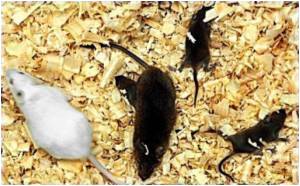Hyperactivity in the mechanistic target of rapamycin complex 1 (mTORC1) cellular pathway has been linked to reduced ketone production, which is a well-defined physiological trait of aging in mice

When we think of aging, sagging skin, dimmed vision, and fragile bones come to mind. But Sabatini's lab is more interested in the cellular changes that occur as organisms age. One cellular pathway, the mTORC1 pathway, is known to coordinate cell growth with nutrient availability and other growth factors.
Previous research has shown that when this pathway is inhibited, a variety of animals, including worms, flies, and mice tend to live longer.
Although an increased lifespan suggests that mTORC1 is involved in aging, it fails to clarify mTORC1's precise role in the process. In fact, lifespan is a poor proxy for studying aging, as it is not always a cause of death.
One well-defined trait of aging is a decrease in ketogenesis, or the ability to produce ketones. During sleep or other times of low carbohydrate intake, the liver converts fatty acids to ketones, which are vital sources of energy during fasting, especially for the heart and brain.
As animals age, their ability to produce ketones as a response to fasting declines. The cause of this phenomenon remains unknown.
Advertisement
He found that while most blood and liver metabolite levels did not change significantly, ketone levels fell.
Advertisement
"That now places mTORC1 as the master regulator of ketogenesis," says Sengupta, who is now a Research Fellow at Harvard Medical School. "It could be one of many inputs for PPAR alpha - that's unclear right now. But mTORC1 is sufficient and necessary to suppress PPAR-alpha and ketogenesis."
Connecting mTORC1 to the aging-related decline in ketogenesis was the next step. If mTORC1 activation is responsible for lower ketone levels caused by aging, turning on mTORC1 in older mice should not affect their already low ketone levels - it would be like trying to turn off a light switch that is already off.
So Sengupta compared the ketone production of old and young mice during fasting. While turning on the mTORC1 pathway during fasting reduced ketone production in the young mice, the old mice maintained the same, low ketone levels.
And when the mTORC1 pathway was turned off in very young mice that were subsequently aged, these older mice did not experience the decline in ketogenesis found in normal mice.
Their ketogenesis levels were similar to younger mice, confirming that continual inhibition of the mTORC1 pathway prevented the aging-induced decline in ketone production.
It might follow that suppressing mTORC1 could slow aging, and indeed, some have suggested that the drug rapamycin, an mTOR inhibitor used to treat cancer and to prevent organ transplant rejection, might have anti-aging properties.
The results are reported in the December 23 edition of the journal Nature.
Source-ANI










